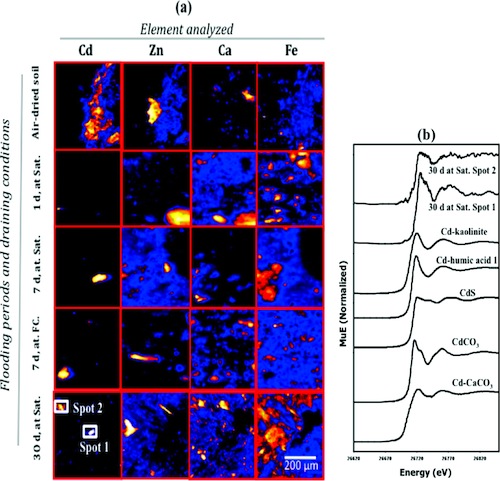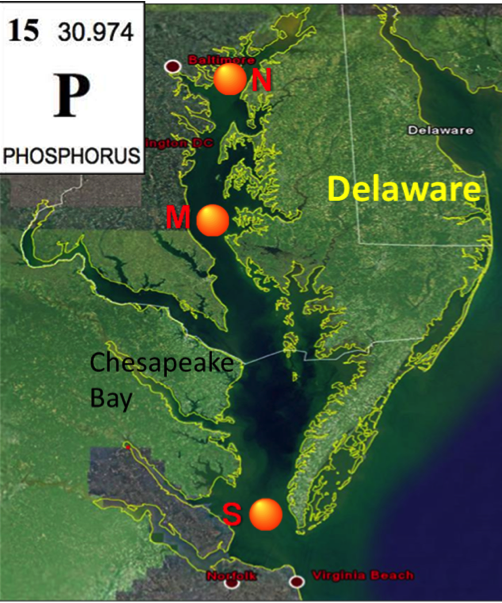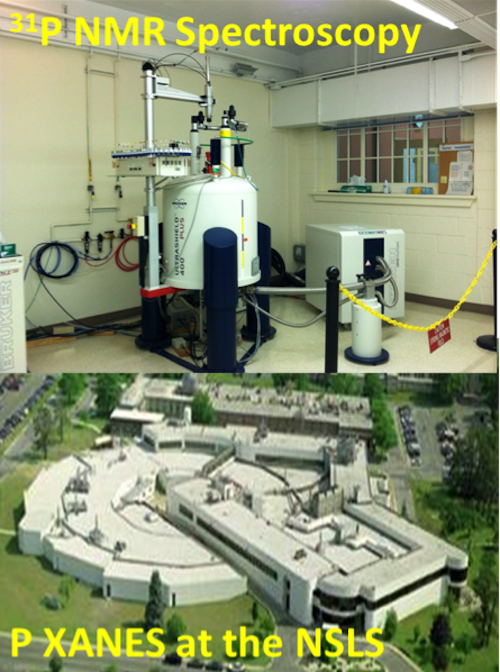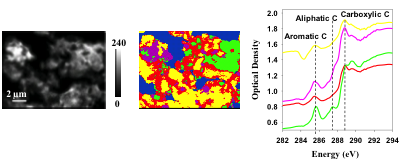 | ||||
| ||||
| ||||||||||||||||
Research Conducted by the University of Delaware Environmental Soil Chemistry Group | ||||||||||||||||
Workshop on Shell Fitting This workshop is designed as an introduction to EXAFS shell fitting for environmental samples. It was put on by post doctoral scholar Matt Siebecker. The talk is geared towards people new to shell fitting of EXAFS data. Group Research Foci Metal(loid) Reactivity and Speciation in Soils and Natural Systems Phosphorus Biogeochemistry in Soils Mineral Complexation and Metal Redox Coupling Impacts on Soil Carbon Sequestration Metal(loid) Reactivity and Speciation in Soils and Natural Systems The Environmental Soil Chemistry Group conducts research on metal associations and reactions with soil constituents, such as minerals and organic materials. Investigations of these relationships help to determine not only in what forms or species the metal is present, but also the chemical process of phase formation and the length of the reaction time for phase development. Soils that contain the metals of interest, either occurring naturally or by contamination, are examined as well as model systems in which metals are reacted with a limited number of soil constituents. This research is important in understanding, modeling, and predicting the fate of metals in environmental systems and is essential for the development of remediation strategies in situations where contaminants are present.
Figure 1: a) Elemental distributions by µ-XRF mapping of Cd, Zn, Ca, and Fe in a contaminated soil under different conditions; and b) Cd—K-edge XANES spectra of Cd standards and of the contaminated soil (from Khaokaew et al. Environ. Sci. Technol. 2011, 45, 4249–4255). From the µ-XRF maps, spatial relationships between the various metals in the soil can be observed, and the XANES spectra will determine the species of Cd present. Phosphorus Biogeochemistry in Soils
| ||||||||||||||||
Sea Level Rise The United States Geological Survey has determined the Mid-Atlantic region of the country is experiencing the fastest rate of sea level rise in the world. Delaware offers a unique opportunity to study the impacts of sea level rise on contaminated coastal sites, because of its large coastline and industrial legacy. The majority of these contaminated areas are clustered near areas of dense population due people's natural tendency to live near the water. The large impact on the environment and human health associated with this issue make it critical to understand the fate of trace metals in soil systems vulnerable to salt water intrusion. Mineral Complexation and Metal Redox Coupling Impacts on Soil Carbon Sequestration Carbon (C) sequestration in soil systems has been recognized as one of the potential measures through which greenhouse gas emissions can be mitigated. Mineral complexation and metal redox coupling are important geochemical processes impacting carbon cycling in terrestrial systems. Microbe-mediated biological processes also greatly influence the molecular structure of soil organic matter (SOM) and complexation with mineral surfaces. Our understanding of the chemical and biological processes for SOM sequestration by soil minerals is still largely unknown. Our research group combines both field and lab studies to investigate the complexation mechanisms of SOM by minerals, and the impacts of metal redox coupling and microbial processes, using a multi-scale approach. We use synchrotron-based C K-edge NEXAFS (XANES) spectroscopy and nano-spatially resolved STXM techniques. One of the goals of our research is to provide a theoretical basis for better understanding SOM stability and carbon sequestration in soils.
Fig. 2 Submicron and nano-scale correlation of elements (C, Ca, Fe, Al and Si) in organo-mineral aggregates using STXM coupled with C K-edge NEXAFS spectroscopy |
||||||||||||||||
Home | Members | News | Links | Research | Photos | Awards | Alumni | Publications | |


 Phosphorus (P) is an essential plant nutrient that is also a common pollutant in aquatic systems such as the Chesapeake Bay and the Delaware Inland Bays’ watershed. Eutrophication caused by increased levels of phosphorus can lead to decreased dissolved oxygen levels and excessive growth of Pfiesteria, which has been linked to fish kills as and human toxicity. The dense poultry industry of southern Delaware produces approximately 300,000 ton of broiler litter annually. Water sources in proximity to southern Delaware’s poultry industry are particularly susceptible to phosphorus pollution due to application of broiler litter as fertilizer to agricultural soils.
Phosphorus (P) is an essential plant nutrient that is also a common pollutant in aquatic systems such as the Chesapeake Bay and the Delaware Inland Bays’ watershed. Eutrophication caused by increased levels of phosphorus can lead to decreased dissolved oxygen levels and excessive growth of Pfiesteria, which has been linked to fish kills as and human toxicity. The dense poultry industry of southern Delaware produces approximately 300,000 ton of broiler litter annually. Water sources in proximity to southern Delaware’s poultry industry are particularly susceptible to phosphorus pollution due to application of broiler litter as fertilizer to agricultural soils. 


